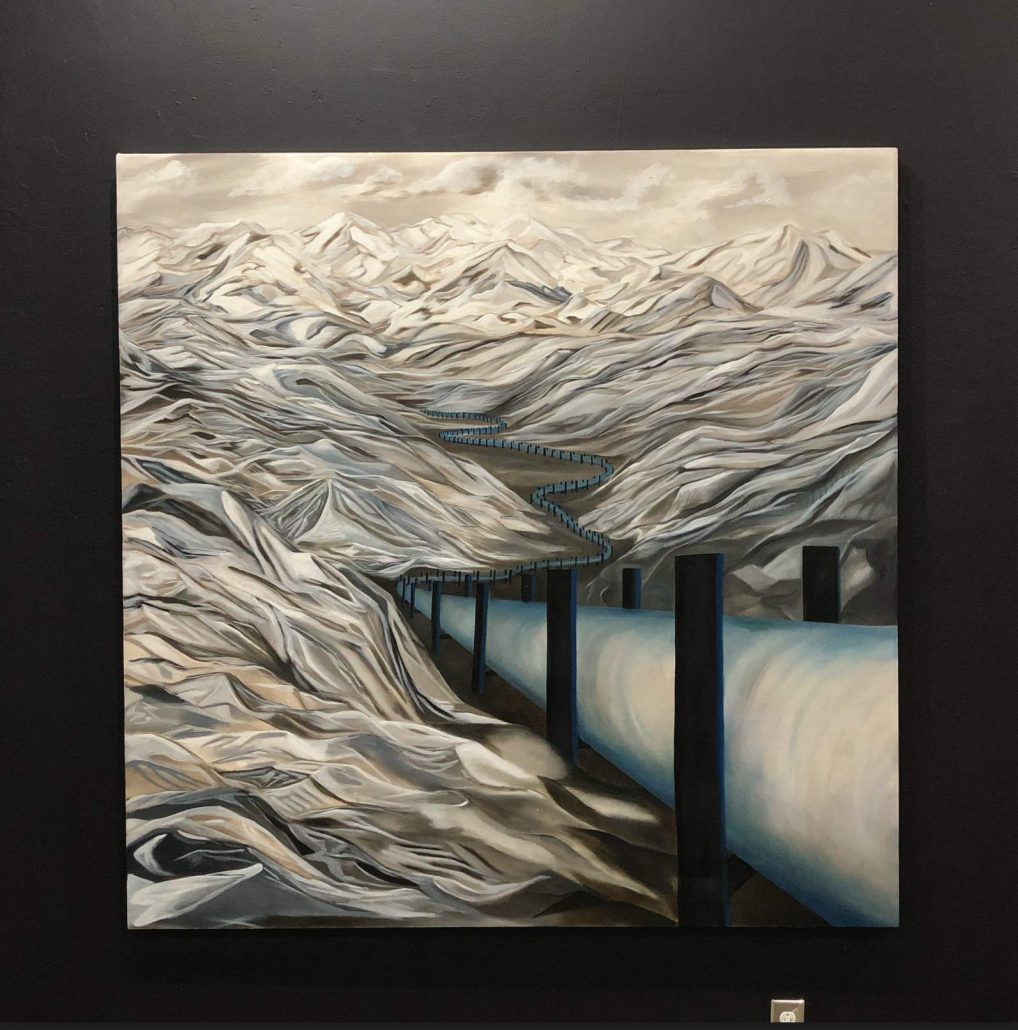Roski artist’s paintings portray Alaskan landscape

There’s no doubt that the Roski School of Art and Design is full of talented students, but few have a story like Alaskan native Natalie Treadwell, whose latest exhibit focuses on natural resource development and consumption in her home state of Alaska, specifically the production of oil.
“These are places that we don’t see and that we don’t talk about,” Treadwell said of her exhibit titled “Crude.” “I’ve had to create a language through the art to talk about the reality of these places.”
Treadwell’s work features oil paintings, adding squid and octopus ink to emphasize the benefit of natural materials. The exhibit, now located in the Helen Lindhurst Fine Arts Gallery, displays paintings such as “The Trans-Alaska Pipeline” and “Refill” on large canvases. Treadwell says it took her over 30 hours to complete each piece.
“I wanted to have an honest conversation about our resource use and really be able to point to the areas that they’re coming from and talk about the misconceptions about developing these places,” Treadwell said.
She explained that most people often misunderstand that the taking of natural resources does not always correlate with just environmental destruction — for Alaska, its directly linked to the state’s economy.
Treadwell’s interest in art sparked when she dropped her Spanish major and decided to take a painting class at the University of Notre Dame. She eventually got invited to become one of the 12 Young Explorers on the Heart of the Arctic cruise. Already in love with her homeland, this trip furthered her interest in the North, its culture and the resources it provides for the rest of the planet.
Now a senior at USC majoring in art and geographic information science and technology, Treadwell shares these intertwined passions with a greater audience.
“The reality is that we use these resources, [like oil], every single day all around the world, and it’s one of our main sources of economy in Alaska,” Treadwell said. “We have an incredible amount of land up there that’s not developed, but there are some pretty great places to get natural resources.”
According to the Alaska Permanent Fund, Alaskans get repaid through tax returns for the resources taken from their state, which, Treadwell said, debunks the misconception that energy development is only beneficial for one specific corporation. Instead, the taking of Alaskan materials is advantageous for both Alaskans, the companies that produce the materials from nature and the rest of the world.
With her art, Treadwell informs her audience of the positive acts natural resource development create for the environment that are often ignored.
“I was really trying to make work that maybe in some ways glorifies [natural resource development], but also just shows it as it is,” Treadwell said. “Whoever comes and looks at it can make a decision about it based on how they feel.”

